An Interview With Stacey Pauwels, the Granddaughter of Louise Solheim
Many years ago I heard my first “ping” on the putting green when a friend used her brand new PING putter. And now, many years since then, I will be reporting from the 2015 Solheim Cup in Germany, which is sponsored by, named for and honors the legacy of PING and the Solheim family. The Junior Solheim Cup for girls ages 12-18 will be held September 14-15. The women’s Solheim Cup begins Friday, September 18th and concludes Sunday, September 20th.
As preparation for my reporting assignment, I decided to learn more about the Solheim Cup’s history and the Solheim family. I noticed the name – “Louise Solheim.” With the intuition of a female golf reporter, I wondered why Mrs. Solheim, the wife of Karsten Solheim, was so seldom mentioned.
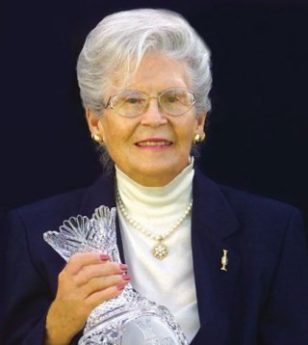
I found one short article about Louise Solheim in a Norwegian travel magazine published eighteen years ago. The beginning paragraph describes her as “…The woman who convinced [Karsten] to turn his golf club business into his career and then worked by his side to help turn it into one of the most successful companies in the history of the game.” [From “Go-Norway” travel magazine – 1978] My research continued.
Born in 1918 in Spokane, Washington, Louise Solheim managed and balanced her 64-year marriage, four children, a college education, a career as a computer and statistical technician – along with advising her husband, Karsten, about his new putter invention. AND then, she managed significant parts of the growing putter business.
To learn more about this 97-year-old “modern” woman, I reached out to the PING corporate office and was fortunate to be directed to Stacey Pauwels, the granddaughter of Louise and Karsten Solheim. Stacey is currently the Executive Vice President who oversees PING women’s golf equipment and apparel. “Yes,” she confirmed, “If it weren’t for my grandmother, the PING Company would probably not be here today.”
We decided that this 2015 Solheim Cup was a good opportunity for Mrs. Solheim to get a little more well deserved attention and credit. Stacey agreed to be interviewed and to share her grandmother’s amazing story along with the contribution she and the Solheim family have made to the game of golf. In the way of introduction here is some background about Louise Solheim to set the stage for our interview:
Louise Crozier was born in Spokane, Washington, on June 6, 1918. Her mother died from scarlet fever shortly after Louise was born. In order to provide a good home for Louise, her father sent her to Texas to live with his sister and family. Ten years later, her father asked Louise to move back to Spokane. Her father never remarried and Louise and her father remained very close until his death in 1958.
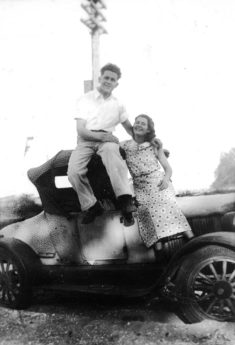
Louise was a very strong student with a special interest and talent in science and math. She graduated high school with honors at the age of sixteen in 1935 – in the midst of the Great Depression. Louise attended a local business college – a common “career” choice for women at the time. She met Karsten, who was then working as a shoemaker. Their courtship was brief and they were engaged in two weeks. Six months later in 1936 they were married. Louise was 18 and Karsten was 24. The photo below was probably taken on their honeymoon.
Louise and Karsten had four children — Karsten Louis, Sandra, Allan, and John, the youngest. Karsten became a mechanical engineer and worked in various businesses in the defense industry, which led to his 14-year employment relationship with General Electric.
His first position with GE was in Ithaca, New York, in 1953. The family moved to Ithaca with three teenage children and young John still in grade school. It was at GE at the age of 42 that Karsten first took up the game of golf. And that is where his quest for a better putter began – tinkering with designs for himself in Ithaca and then in Syracuse.
In 1956, Karsten was transferred to Redwood City, California where he began to sell his putters, making full use of their home’s patio and garage where they were manufactured.
When GE transferred Karsten and family to Phoenix, Arizona in 1961, they made sure their new house had an even bigger garage.
With that background, it’s my pleasure to introduce you to Stacey Solheim Pauwels, the granddaughter of Louise and Karsten and daughter of their middle son, Allan D. Solheim.
Stacey, let’s begin with this question:

Q. Your grandmother had an unusual childhood – separated from her father and sent to live with her aunt and family in Texas. Did your grandmother ever talk about that part of her childhood? Do you think it shaped her life in any way?
A. She did talk about her upbringing. She loved living in Texas with her aunt and uncle and her “sister-cousins.” She fell right into the role as the youngest and had a grand time living on the farm. Then, at age 11, her dad, whom she only recalled seeing once before, came to take her back to Washington State. It was a hard adjustment and she had much to learn about cooking, meal preparations and maintaining a household. Did it shape her life? Absolutely, she is a strong individual because of it.
Q. When your grandmother was 18, she married, Karsten. Are there any family stories about how they met?
A. They met at a church Christmas event and it was pretty much love at first sight. Louise noticed a nice-looking young man with beautiful curly hair in the choir loft with 12 boys. She was impressed that he took an active role with the youth program and immediately felt something saying to her – “That’s the man you’re going to marry.” Karsten asked her out and they were engaged within two weeks. They waited six months, until Louise turned 18, to marry. They did not live all that close and during their engagement they wrote to each other daily and sometimes twice a day. I found the letters and can picture the two of them frantically writing before the postman arrived, and anticipating a letter in reply.
Q. Your grandmother explained to a reporter for the ‘Go Norway’ article that when she got married she vowed to put the desires of her husband and family ahead of her own. Yet, she held several business positions especially related to her strong math background. How did she manage her multiple roles?
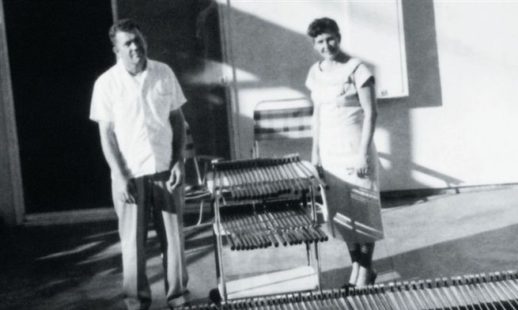
“manufacturing” patio in Redwood City, California in 1960
She was always a helpmate to Karsten, whatever he was doing. When she was home with the children, she would do whatever she could to help him, putting together sales newsletters, writing reports and correspondence, and even boarding college students in their home to help make ends meet. She did not work outside the home until John, their youngest child, was 5 ½ and going to school. She enjoyed the work she did at Convair, the Engineering College at Cornell University, Eastern Milk Producers, Lockheed Aircraft, and Ampex Corporation, but each time she left employment it was because she put the family first. Where Karsten would go, she would too — most often following him after taking care of selling the house, and all of the major moving responsibilities.
Q. In 1961, your grandfather was transferred by GE to Phoenix. Your grandparents bought a house with a big garage where “they” could really manufacture putters. What was your grandmother’s role?
She took care of the business end – picking up supplies, mailing clubs, writing orders, billing, and keeping the books.
Q. I read that your grandmother initially wanted to name her husband’s putter the “Answer” because it was the “answer” to better putting. Was that a big discussion in your family?
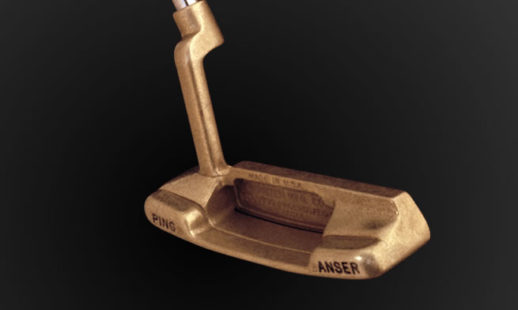
A. That is a fond family story. Karsten had named his putters PING in 1959 because of the sound the original putter made. In 1966, Karsten had a new putter design that was slated to be molded the next day – and he needed a name fast. He shared his dilemma with Louise and she suggested “Answer.” His reply was that it was too long and couldn’t fit in the available space. The next morning he still did not have a name, so Louise suggested that he simply leave out the “w.” He liked it and the problem was solved with the “Anser.”
Q. What role did your grandmother have as your grandfather began selling more and more putters?
A. She was still taking care of the business end, but it was beginning to take up more and more of her time. Whenever she would make a trip to visit family, she would stop at all of the golf shops she could find along the way to show them Karsten’s putters. She confesses to not being a very good sales person, and felt that most of the time the golf professionals placed an order because they felt sorry for her. Ultimately, when orders started to come in from other countries, Louise took a college seminar on foreign trade to learn the proper way to ship product internationally.
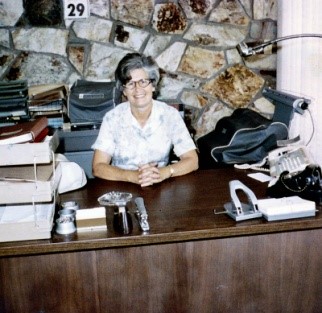
Q. But in 1966, GE wanted to transfer your grandfather to yet another city, which would mean leaving the “garage” and the putter business in Phoenix. How did your grandmother take that news?
A. Well, she was tired of moving and had been keeping the books of the business for a few years. She knew that the business was growing and they were at a point where Karsten could support his family from his own little enterprise. All of the advice Karsten received, from his family, his friends, his pastor, was not to give up his job – it was too risky. Yet, together they made the decision to devote their full time and attention to the putter business. They made the right call
Q. Did she offer career advice to her children and grandchildren? How did she influence or inspire you to balance your family and your role at PING?
A. Louise always wanted her children and grandchildren working for the business, which all have done to one extent or another. On the women’s side, her daughter, Sandra, was the receptionist for a time and was well known for her wonderful smile, greeting all guests who would come to Karsten’s little business in the Arizona desert. Her granddaughters (my cousins) have all had some experience here, one of which is an attorney and is quite active on the legislative side of the business. At last count, there are 13 family members working at Ping today.
But Louise also respected those who decided to stay home with their family. She did feel that she needed to find one of her granddaughters to mentor, someone who could add that “female touch” to the business when she was no longer able. She heavily hinted that I should work for her directly and after the third hint, I told her that I would. When I began having children, she adjusted her schedule to accommodate my new family responsibilities so that I could contribute to the business and not feel as if I was giving up my family life.

Q. You mentioned your grandmother’s value of the “female touch” in the PING business. What did she mean? And how has that made a difference at PING?
A. I think what she really was looking for was someone to take on her role. I assured her that I was up for the task but that I would never have the influence on Karsten and her sons that she had as wife and mother. What she did and I try to do is keep communications flowing and being the organizer of the family, while also extending a listening ear to any employee concern. The difference at Ping? We still have a family atmosphere that people like to be around. Currently, over 28 percent of our employees have been with us more than 20 years.
Q. You have taken on an important legacy. What is your grandmother’s continuing role with the company?
A. She remains on the Board of Directors of Karsten Manufacturing Corporation and continues to share her strength, wisdom, and guidance. She also attends some our special events, where as you can imagine, she is treated as a “rock star.”
Q. Outside of PING, what other interests does your grandmother have? Did she play golf? Does she have any particular hobbies or charities?
A. She is devoted to her children, grandchildren, and great-grandchildren. She has been quite active in her church, various ministries, and assisting in the local community. She learned to play golf as a delightful surprise to Karsten in the 70’s and had a pretty mean short game. She doesn’t get out to play now, but she did work a bit on her putting game last year. She loves to read and have tea with friends.
Q. What are some of your favorite memories of being with your grandmother?

Celebrating Louise’s 84th birthday (2002)
A. Let’s see…spending time with her when I was a little girl – she always looked so elegant. As an adult, my favorite memories are of tea time. Virtually every workday around 2 o’clock, Louise would have tea and cookies in Karsten’s office. Karsten would come up from the factory floor and business meetings would take place at Karsten’s round table in a friendly atmosphere. It was here that you could really see the influence Louise had and the difference she made in the business.
Q. If you had to pick a few adjectives to describe her, what would they be?
A. Humble, brilliant, shrewd, beautiful, elegant, and kind. And she was a good problem solver. She would help you figure out what to do yourself and once a decision was made, she would assist you in your decision, however she was able.
Q. What do you recall about your grandparent’s decision to sponsor the Solheim Cup?
A. It was 1990 and the Commissioner of the LPGA Tour contacted Karsten and Louise about an idea for a Ryder Cup-like competition for women. Karsten and Louise expressed an interest and ultimately committed to sponsoring the first 10 events. Around the company there was quite a bit of excitement about the event, particularly from our female golf population. The first teams had eight players apiece so that the event could start small with the best of the best and have a better chance for equal depth of abilities on the squads.
Q. Was there some special interest that PING had in women’s golf that encouraged your grandparents to sponsor the Solheim Cup and to include junior girls as well?

A. Early on my grandparents felt that the men’s tours were doing fine, but that the ladies needed help getting the recognition they deserved for their golfing prowess. My grandparents began their sponsorship of LPGA events in 1975 with the Karsten-PING Open held in Phoenix and at the time of the first Solheim Cup, were the major sponsors of four different LPGA Tour events. The Solheim Cup presented the opportunity to showcase women’s golf on a whole different level – front and center internationally – and to be a part of history in the making. Ultimately, given our involvement with women’s golf, it was an easy decision. The next question was “How to keep women’s golf and the Solheim Cup growing?” We felt that the creation of the PING Junior Solheim Cup was the logical next step.
Q. The PING Junior Solheim Cup for women aged 18 or younger is played just before the women’s Solheim Cup. It is an amazing venue for young female golfers. Any background you would like to offer about the Solheim Junior competition?
A. This is a bit of an undiscovered gem of a competition to watch. These young ladies are very talented and have played some AMAZING golf. I’ve seen eagle putts matched, birdies matched and young ladies wearing their heart on their sleeves representing their country at a young, yet capable age. Many Solheim Cup players played on the PING Junior Solheim Cup team before they “made it.” These girls are the stars of tomorrow, at a stage where there is still a bit of giddiness and awe when someone approaches them for an autograph. It is a sight and thrill to behold and be a part of.
Q. Here we are talking about women’s golf and you play a key role in developing PING products for women. How did you come to that position? And, anything else about PING clubs for women that you would like to share?
A. Well, first, I am a pretty decent golfer. I played a lot of junior golf growing up and I can hold my own with the guys. I started working in the business full-time out of high school and have been there ever since. I spent some time early on in most office departments at PING and even supervised customer service for a few years before going to work for Louise directly. While working, I have earned my bachelor’s and master’s degrees. I know golf and can particularly relate to women, the various hats they wear and their challenges on the golf course.
Now to boast a little about PING: We are a custom club maker and can build clubs for every type of female golfer. We have designed the Rhapsody line for those whose driver swing speed is around 75 mph or less. It is lightweight and designed to maximize distance and forgiveness for those at or under that speed. For players with swing speeds above 75 mph, we have the long and forgiving G30, GMax, and other club families. We have a variety of shafts, lofts, lie angles, and grips to optimize the clubs for individual golfers. So whatever your height, hand size, swing speed, swing pattern, or strength, we can build a club that fits you so you can play your best.

Q. Will you be at the Solheim Cup? Who do you cheer for? It must be hard since golfers on both teams use PING golf clubs.
A. Yes, I will be there. There will probably be about a dozen of us from the Solheim family attending. We try to stay neutral and not favor either team. We usually cheer for PING players first, then for some fantastic golf, and ultimately we want the final outcome to be close – coming down to the last putt on the last hole by the last group on Sunday.
Nancy’s final question: I would like to end – not with a question – but with a final “Thank You, Stacey!” for sharing your grandmother with us. As we watch the Junior Solheim Cup and then Team Europe and Team USA compete in the women’s 2015 Solheim Cup, we will know that a very special woman played a very special part in establishing the Solheim Cup. All golfers and golf fans join me in thanking your grandmother for her contribution to women’s golf and wish her more years of pleasure and enjoyment.
All historic photos in this article are from the private library of the PING Company and may not be reproduced without the permission of PING.







